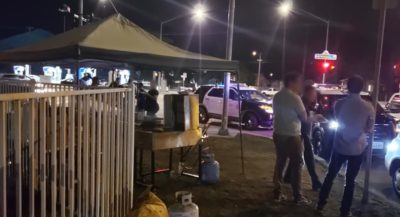In the autumn of 1978, the day finally came when I was old enough to have a newspaper route. During the preceding summer, I’d endeavored to beat the clock but was turned away by the owner of the store with the same message said in different ways: “You’re not old enough yet, lad. Come back when you become a teenager.” And so, I did — starting my first newspaper route two days after my 13th birthday.
As I look way, way back into that triangular transaction between newspaper publisher; store owner and a little boy on his bike — it taught me much about the foundation of business in a free-market economy.
Not everyone had a newspaper route and no one was forced to have one. Some of my friends got such a generous handout from their parents each week in what we’d call “pocket money” there, and an “allowance” here, they didn’t need to work. Isn’t that rather like today whereby the government will give out an “allowance” to some who don’t want to do anything? Just like those parents who gave their children money for nothing; I wonder what the wisdom is, in a government doing the same.
Journeying back to the summer of ’78, some of my friends had two newspaper routes — one in the morning and one in the evening. What capitalists! These kids always had cash. A small proportion of my friends also had a Sunday route, which was when the big bucks came in — due to the increased size of the route, and the volume and price of the newspapers. These were the “Sunday Boys” who were able to save or get whatever they wanted — all out of their abundant coffers.
See, free choice in a free-market economy resulted in some continuing to depend on their parents; some had a little extra; some had more and some had a lot — all driven by an individual’s choice to not work; work some; work more or work a lot. When a kid didn’t show, others seized the opportunity to squeeze another route in before school — often turning up at the schoolyard with seconds to go until the bell rang.
The owners of the store — what we called across the pond, “the news agents” — clearly had their margins worked out. As a kid I never thought about their money-making model, but now I figure their labor cost was about 15%.
Workers sometimes gripe today about the gross margins their employers make. I’m reminded of the fact that nearly 250 Starbucks stores across 40 states have voted to unionize since 2021. Their primary venti (forgive the pun) was the distaste they had for the corporate gross profit margins — I assume that 85% can seem err, “gross” to someone who might not understand the fundamentals of commerce.
Just like we may have balked on our bicycles if we knew our news agent was making 85 pence for every 15 pence we were being paid, I can understand the bile of a barista thinking the same.
The cost of goods sold for Starbucks is about 15 cents on the dollar, hence the 85 cents gross margin, but from that they have to deduct their cost of labor, which according to last year’s publicly available P&L was 40%. You might be thinking — “Hey but 45% profit is still pretty rich!” And… you’d be wrong because they actually made only 12% net margin after deducting all the operational (non-labor) expenses at the stores; the overheads at the corporate headquarters and paying that three-letter word ending in “x” we all love — tax.
I don’t know how much my first boss made at that first job but I figure it couldn’t have been more than 10% when he closed shop, each late evening. Most importantly, his entrepreneurial enterprise provided me an opportunity to make money and, most gratefully, to learn about the foundation of business in a free-market economy, and for that, I am forever grateful.
Paul Butler is a Santa Clarita resident and a client partner with Newleaf Training and Development of Valencia (newleaftd.com). For questions or comments, email Butler at [email protected].













